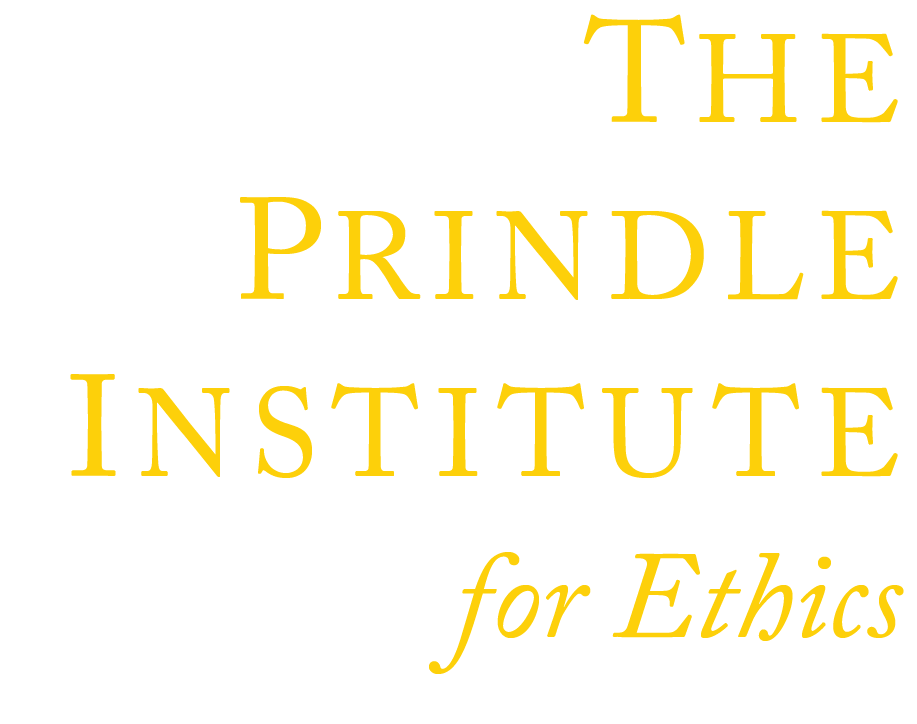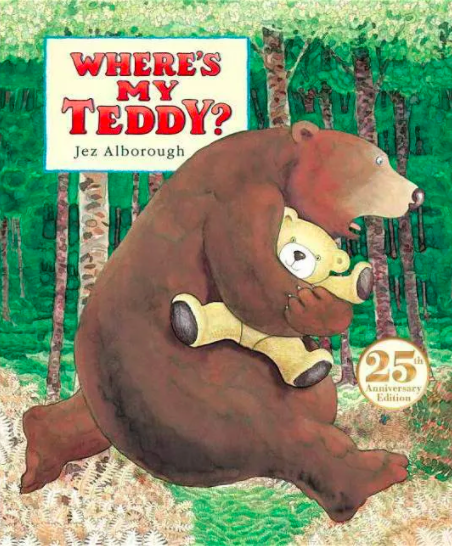Where’s My Teddy?
Book Module Navigation
Summary
Where’s My Teddy? explores philosophical topics surrounding being afraid, personal “security blankets,” feeling safe, possession, and strangers.
Eddie has lost his teddy and goes off into the woods to find it. He notices a giant teddy who is too big to cuddle with. He then realizes the giant teddy belongs to a giant bear who has found Eddie’s teddy. The giant bear and Eddie grab their teddies and rush home to cuddle with them in their beds.
Read aloud video by Reading Pioneers
Guidelines for Philosophical Discussion
At the beginning of the book, Eddie is afraid because he has lost his teddy. His teddy is what makes him feel safe and protected. The first set of questions is about the idea of feeling safe and having something that makes you feel safe. This can generate a discussion about “security blankets.”
The second set of questions can be built off of the discussions held in the first question set. The opposite of feeling safe is then discussed. Children can explain how it feels to be afraid. In the story, when Eddie and the giant bear first see each other, they are absolutely terrified. This story proves that no matter how big or small someone is, everyone is capable of being afraid and having fears. You can discuss personal fears, and children will realize that not everyone is fearful of the same things. It can be questioned whether adults have fears and whether it is possible to be fearless.
The third set of questions discusses the topic of possession. In the story, both Eddie and the giant bear find teddies that are not their own. This event brings up the issue of what can be rightfully yours, and anyone can claim something lost. Children should be asked what they would do if they found something that didn’t belong to them, as this becomes an ethically based discussion. They should think about whether it would make a difference in what they would do, if they wanted the item they found or not.
The fourth question set focuses on strangers. Who is considered a stranger, if and when you should talk to a stranger and whether it’s always dangerous to speak to a stranger are a few of the ideas that should be discussed. The majority of children will have been told at some point in their lives to never talk to strangers, and although this is true in most situations, some situations require you to talk to a stranger. For example, the first day of school requires meeting and talking to strangers who are not threatening.
The final question set revolves around the idea of what students believe a “safe place” is. Not everyone is going to feel safe in the same environment based on their experiences. For example, someone may feel safe walking through a shopping mall, but another person who had previous experience being lost in a mall may not. In the story, Eddie was afraid of being in the forest alone, yet the bear was not because it was his home. This proves that what may feel safe for one person may not feel safe for another. Children can then reflect on their own experiences of what they view as a safe place or what they once viewed as a safe place but no longer do.
Questions for Philosophical Discussion
Feeling Safe
In the book, Eddie and the bear both have teddies that they like to huddle and cuddle with.
- Do you know what a “security blanket” is? Can another kind of object function as a security blanket?
- Do you have something or someone that makes you feel safe? If yes, what is it? Why?
- Have you ever been so scared you wanted your “security blanket”?
- Do you think grownups have “security blankets”? If yes, what do you think a grownup might use to feel safe?
- What does it mean to feel safe?
- Is it possible to not feel safe even when you have your “security blanket” or someone who makes you feel safe with you? Why?
Being Afraid
When Eddie and the bear see each other, they are terrified!
- What are you afraid of?
- Why are you afraid of it?
- Is it possible to be afraid of something without reason?
- How does it feel to be afraid?
- Is it possible to be afraid of something that someone else is not afraid of? Why or why not?
- Is it possible to not be afraid of anything? Why or why not?
- Can anyone be scared?
- What about grownups?
- Firefighters?
- Policemen?
- Superheroes?
- Can you be afraid of something that only exists in your imagination?
- Can you be afraid of something that can’t hurt you? Can only things that can hurt you be scary?
- Is there a difference between being shy and being afraid? Can they be the same thing?
Possession
In the book, Eddie and the bear both find teddies that do not belong to them, and keep searching for their own teddy.
- What would happen if Eddie and the giant bear kept the teddies that didn’t belong to them?
- If you find something, should you keep it? Why or why not?
- How would you feel if somebody kept something that belonged to you?
- What makes something yours?
- What would you do if you found something that wasn’t yours? What if you really wanted to keep it?
Strangers
When Eddie and the bear see each other for the first time, they run away.
- Has anyone here ever been told not to talk to strangers? (Make sure they are reminded that they still should not talk to strangers.)
- What is a stranger?
- Are all strangers bad? Why or why not?
- Can somebody your own age be a stranger?
- Is it ever okay to talk to a stranger? If yes, why? (Remind them that when they first met their teacher, he/she was also a stranger.)
- What kind of strangers are usually okay to talk to?
- When does somebody stop being a stranger?
Safety
Eddie was afraid of the “scary” forest, and it was not necessarily safe for him to be there all alone. The bear lives in the forest, and for the bear; it is a safe place.
- Was it safe for Eddie to be in the forest alone? Why or why not?
- Can a place be safe for one person, but not for another? Why or why not?
- What makes somewhere a safe place to be?
- What makes a place dangerous?
- Can a safe place ever change into a dangerous one? How?
Original questions and guidelines for philosophical discussion archived here. Edited June 2020 by The Janet Prindle Institute for Ethics.
Find tips for leading a philosophical discussion on our Resources page.






